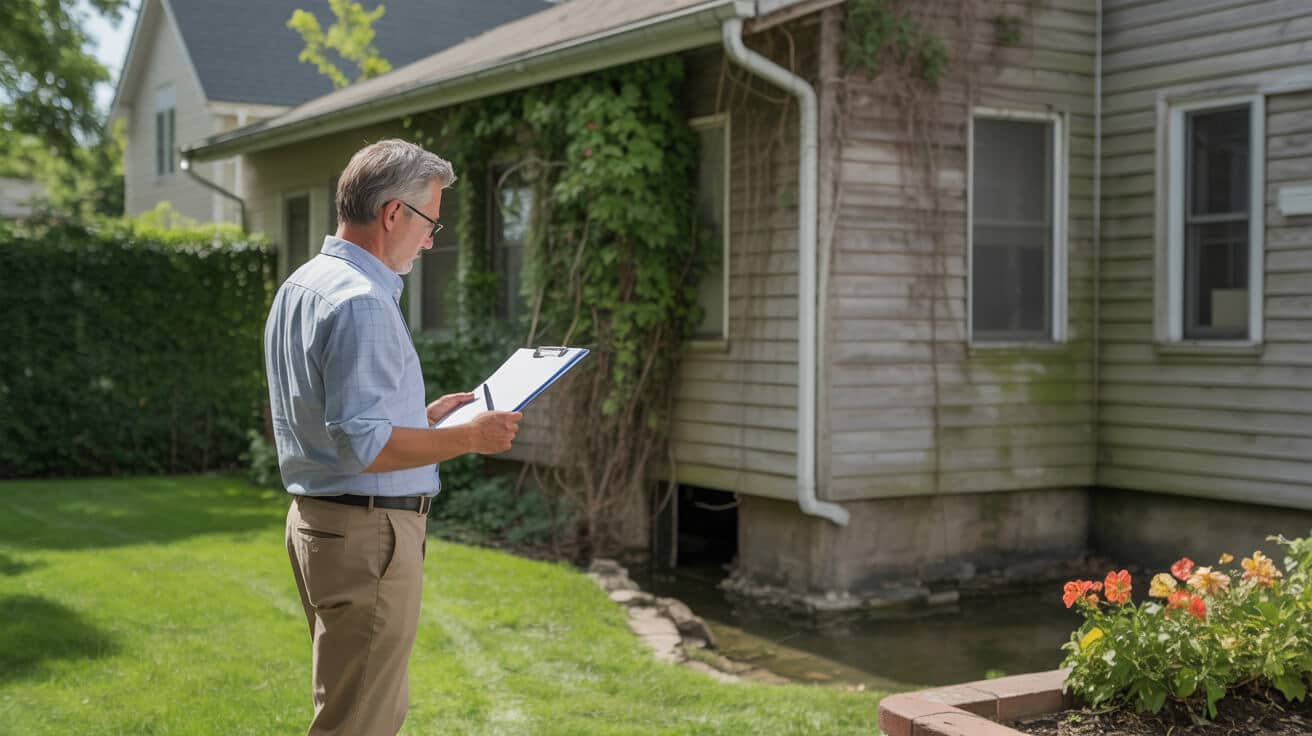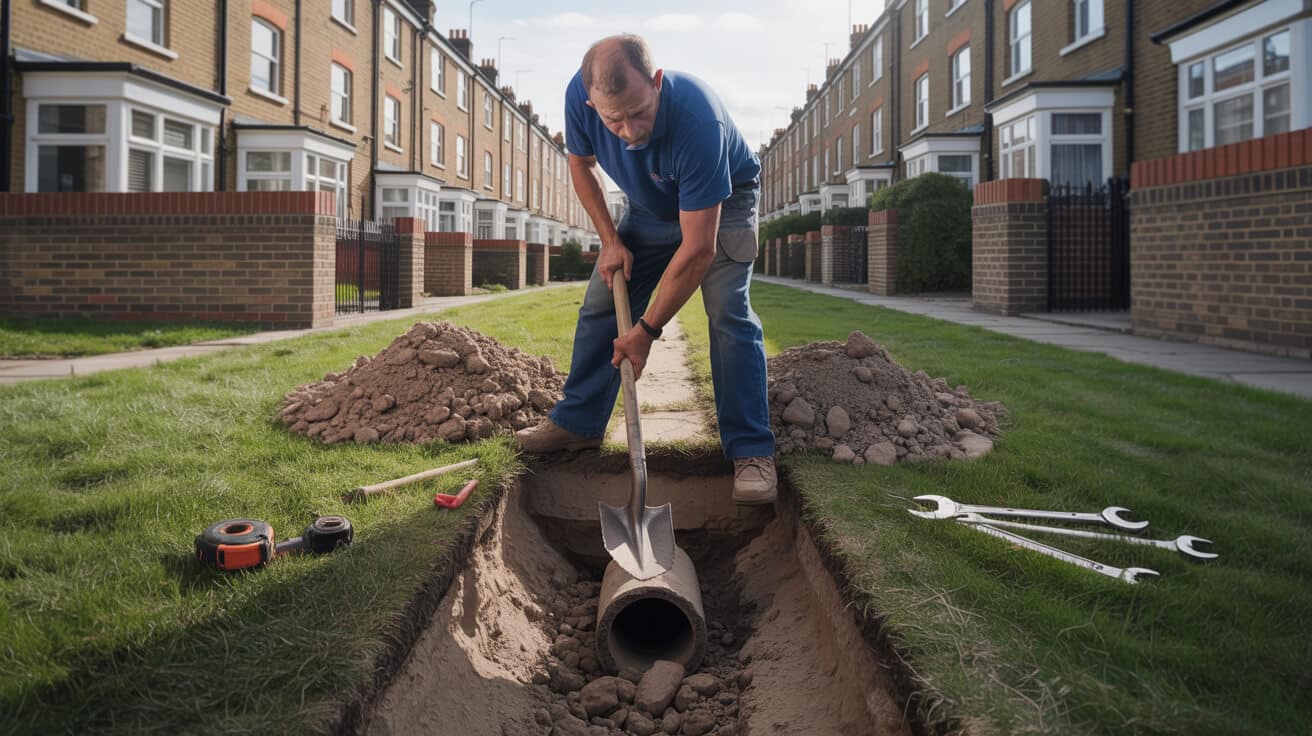 Landlord Guide Achieving Epc Minimums for Heating in 2025
Landlord Guide Achieving Epc Minimums for Heating in 2025

Why Heating EPC Standards Are the Line Between Lettable and Lost Income for Landlords in 2025
Landlords heading into 2025 face a sharp crossroads: heating energy standards are now make-or-break for profitable rentals. Legislation has moved the target, but it’s the domino effect—councils stepping up audits, online platforms quietly filtering out low-rated properties, and lenders scrutinising EPC paperwork—that’s redrawing the map for everyone with rental properties. The short version? EPC is no longer just a compliance tick—it’s the new baseline for tenant trust, insurability, and income stability.
Every month you delay tackling heating upgrades, your options to secure premium tenants and decent insurance quietly shrink.
If you’re holding off because official rules look fuzzy, you’re not alone—but the time for waiting is over. The real question isn’t “What’s the minimum EPC band?”—it’s how you weave insulation, upgrades, and airtight documentation into a strategy that actually locks down your future income and asset value. You don’t need to be the earliest adopter. But, in this market, landlords who move in rolling steps keep their properties marketable and fundable—ahead of those who hold out for last-minute fixes. It’s about the sequence, not one magic bullet—nail that, and EPC compliance turns from a drain into a lever for growth.
What Really Changed for EPC and Heating Law in 2025? Fact Versus ‘Band C’ Myth

The letter of UK law has drawn a clear line at EPC Band E for property letting in 2025—but the real test for landlords is how the rest of the market glosses over this minimum, setting higher bars in practice. Estate agents now promote Band C or better as “standard,” lenders reward only properties on a steady improvement curve, and portals sometimes quash low-EPC listings before you even get started.
EPC is now a credibility signal for landlords—move quickly, or you’re boxed out of premium markets. *(homelet.co.uk)*
- Letting below Band E is illegal: (except for rare, exempt cases). This triggers fines up to £5,000—and, increasingly, blocks you out of major advertising channels ([gov.uk](https://www.gov.uk/government/consultations/improving-the-energy-performance-of-privately-rented-homes-2025-update?utm_source=openai)).
- Band C as the new “competitive” minimum: Large agents, city-focused landlords, and professional investors treat “Band C, or at least a documented plan to get there,” as the new entry point—especially for premium tenants.
- Grant, loan, and mortgage access is tied to upgrades, not just the letter of the law: Bank underwriters often require “evidence of staged, professional upgrades”—a single dodgy boiler swap or undocumented fix is now a red flag.
Landlords clinging to the idea that policy delays mean delay for the whole market are missing two realities. First, the infrastructure for audits and enforcement is already in place. Second, rising tenant expectations and competitive offers mean even Band E can leave your property stuck in the slow lane. If you don’t have a clear plan—and an evidence stack to back it up—every grant, every insurance renewal, and every future tenant or buyer starts to slip through your fingers.
Does a Boiler Swap Still Move the EPC Needle Fastest, or Is Insulation First Priority in 2025?

The myth that simply replacing the boiler will fast-track EPC improvement lives on. Reality check: heating kit only does its job if the house holds onto its heat. Insulation upgrades are the real starting block, not an afterthought.
Boilers get the glory, but without upgraded insulation, most properties waste their new heat (and the owner’s money). *(energysavingtrust.org.uk)*
The Smart Sequence: When to Do What
1. Insulate First—Every Time
Plug the leaks first: loft insulation, cavity wall or internal wall upgrades, underfloor insulation if feasible, and definitely visible pipe lagging. For £1–2k you’re often halfway to Band E or beyond and have already unlocked several energy grants.
2. Upgrade Heating Plant—Once the Losses Are Stopped
Modern Condensing Boilers can bump up ratings for older F/G/E homes—if insulation is sorted. Without it, you’re literally watching your investment blow out the window. Looking further ahead? BUS-grant heat pumps open up Band C, but only for well-insulated buildings.
3. Controls & Zoning—Squeeze Every Last Point
TRVs, smart thermostats, and multi-zone controllers don’t just net EPC points; they impress both grant managers and tenants. Upgrades from £300 to £1,000 can tip the scales.
4. Bulletproof Documentation at Each Step
Grants, listings, and audits all demand proof: logbooks, certificates (GasSafe, G3, WRAS), signed-off photos, and branded invoices.
No one wins with a backwards workflow. Sequence matters—sort insulation, then heating, then controls, with a paper trail for every action. Miss a step or muddle the order, and you risk missed grants, lettings voids, or, in the worst cases, heavy penalties and lost income.
What Are the Hidden Risks of Half-Measures or Poor EPC Paperwork?

Visible EPC upgrades are only half the job. Landlords who scrimp on paperwork or cut corners run into invisible barriers no one warns you about—until your listing’s blocked, your grant denied, or an insurer walks away.
A single missing certificate can stop a letting or grant payout dead, even on an otherwise perfect job *(landlordvision.co.uk)*
- Insurance Gaps: Upgrades done by anyone without the right certification (GasSafe, G3 for cylinders, WRAS for fittings) don’t just risk fines—they can void your cover, sometimes even retroactively if a claim happens down the line.
- Lost Funding: Grant bodies will demand more than “just a receipt”—serial numbers, stepwise photos, signed-off engineer records. Missing a logbook, stage photo, or invoice detail is enough to kill the deal—even if the work is top quality.
- Blocked Listings: letting agents and portals demand proof of compliant work, and often ask for evidence before showing your property to the next tenant or insurer.
- Tenant Disputes: Modern tenants, especially student and HMO clients, now challenge heating bills and comfort claims—and can force last-minute council inspections if you lack the right paperwork.
A smart landlord’s “evidence bundle” includes logbooks of every upgrade, G3/GasSafe/WRAS-countersigned certificates, before/after photos, and a clear step-by-step list of works matched to every claim or grant. At Plumbers 4U, we standardise that process and keep clients ahead of the audit, so you’re always ready to offer the proof before anyone asks.
Which Specific Heating Upgrades Boost EPC Scores Most? The Stepwise Guide

Most Band F or G homes can’t reach Band E or C by jumping to a plant upgrade alone. Here’s how to unlock points with least pain.
Insulation: Your Quickest Win
- Loft, Cavity, and Pipe Insulation: All deliver dramatic rating jumps—think 15–30 EPC points, done affordably (roughly £1,500–£2,000 for many homes).
- Skip insulation and plant upgrades underperform: Grant access, too, now requires photos and signed logs for all insulation upgrades.
Heating Plant: Condense Gains
- Condensing Gas Boiler: Brings most E-rated homes to Band E or even D; £2,000–£3,500 for a decent instal, with efficiency over 90%.
- Heat Pumps: BUS grants mean up to £7,500 off (in 2025), but only for homes with proof of prior insulation and documented upgrades.
Heating Controls: Easy Points Often Missed
- TRVs and Smart Thermostats: These low-disruption upgrades unlock surprising EPC points and improve “comfort” in the eyes of both tenants and audits. Adding smart heating controls is £300–£1,000 but often makes the difference at margin.
Pro Rule: Only invest in “bling” controls after the bones (insulation, efficient boiler or pump) are in place. Document every action to avoid paperwork black holes that crater later claims.
How Much Will Upgrades Really Cost—and What’s the Return for Landlords?

On paper, compliance spending might feel like a tax, but returns are real—higher rents, fewer voids, and stronger property value over time. Heating and insulation upgrades now function as income insurance, not just regulatory box-ticking.
- Insulation: Most homes clinch 15–30 points for £1–2k, slashing tenant complaints about heat loss and making grant paperwork easy.
- Boiler: £2–3.5k for a high-efficiency condensing installation, with 40+ points and often immediate Band E compliance.
- Heat Pump: £7–£12k up front, but with 60–80+ point potential. Grants can trim costs if insulation is up to scratch, and open Band C compliance for future-proof lets.
- Controls: TRVs and smart stats mean small outlay, potentially big point gain; improved appeal to digitally-minded tenants.
Passing up best-practice, logged upgrades isn’t saving money—it’s leaving income and grant funding on the table for someone more organised.
Long-term, the investment in detailed, stage-by-stage documentation multiplies returns: you access more grants, experience fewer voids, and enjoy consistent “letability” with zero grey areas during audit cycles.
Through Plumbers 4U, every log, serial, and event is handed to you—streamlining claims and smoothing agent or council queries every time you need them.
Which Heating EPC Upgrade Mistakes Lead to the Biggest Problems for Landlords?

Too many landlords, under pressure or chasing a fast fix, still repeat a familiar set of EPC missteps—each setting up bigger trouble down the line.
- Ignoring Certification: Works done by “handymen” or uncertified installers don’t just invalidate grants—they open you to legal and insurance risks that can surface years later.
- Missing or Messy Paperwork: One missing photo or line on a cert can mean admin limbo; councils and grant bodies have zero tolerance here.
- Jumping to Plant Upgrades Too Soon: Skipping insulation drains heat, cash, and grant eligibility. The EPC system is designed to penalise “equipment only” upgrades done out of order.
- Shooting for ‘Good Enough’ Band E: The real market and lending standard is now Band C. Properties left behind aren’t just harder to let—they’re depreciating in comparison to peers.
- Failing to Sequence and Log Upgrades: Without a choreographed approach, you miss out on grant stacking, longer-term efficiency, and simpler, stress-free audits.
Stick relentlessly to:
- Engineer and installer certification (G3, GasSafe, WRAS).
- Logbooks and visual evidence for every job completed.
- Structured, grant-friendly breakdowns on all invoicing.
Plumbers 4U eliminates these risks with a methodical, documentation-first flow—so you never get caught out by details or policy shifts.
How to Make Your EPC Heating Strategy “Audit-Proof” and Future-Ready

With EPC and heating upgrades, the real asset isn’t just new kit—it’s audit-ready paperwork that stands up to scrutiny. Treat every improvement as a logged, demonstrable event.
- Re-assess EPC every two years: Even minor changes (or re-tests) can swing a property up or down a band.
- Create a live digital and paper record: Maintain running logs of every certificate, instal, and invoice in one easy-to-access folder.
- Modularise each upgrade: Don’t lump all works into one project. Insulate, upgrade plant, and add controls *in order*, each with explicit records.
- Insist on photo and serial evidence from every engineer: Most failed audits and grant refusals trace to missing physical proof.
- Partner only with certified contractors using WRAS, G3, and GasSafe sign-off routines: This saves you from dead ends and last-minute lets.
- Double-check grant paperwork eligibility with every planned work: One error or shortcut can block substantial funding.
- Make sure every interaction with service providers is clear, jargon-free, and logged for easy reference.:
Most landlords regret not documentation—they never regret organised, stepwise, audit-friendly upgrades.
The market now rewards properties that treat upgrades as process, not panic. What you bank on is not just an EPC jump, but robust, unimpeachable records—ready to show anyone that matters, when it matters most.
Secure a Regulation-Ready Heating Audit with Plumbers 4U Today
You don’t win by scrambling at the last minute or crossing your fingers on boilerplate paperwork. A staged approach—planned, documented, and signed off by truly accredited professionals—is your best insulation from regulatory scrutiny and lost rents.
Here’s what you secure with Plumbers 4U:
- A heating audit completed by cross-credentialled engineers (WRAS, GasSafe, and G3) who know the UK’s layered compliance maze inside out, for domestic and commercial properties.
- Property-by-property EPC maps, including clear Band C/Band E scenarios and upgrade pathways.
- Documentation packs with everything: logbooks, stage-by-stage photographs, compliance records, and all certificates.
- Direct, clear communication at every step—no jargon, never an unexpected upsell, and total pricing clarity.
- Support through the grant and funding jungle, including checklists and all paperwork filed the right way from day one.
Proactive compliance isn’t a barrier. Done well, it’s your single strongest lever for income, risk reduction, and long-term value. Take ownership before the law or an audit forces your hand.
Protect your portfolio, stay ahead of shifting benchmarks, and build resilience into every unit you let. Book an EPC-compliance and heating review with Plumbers 4U today and partner with engineers who keep you audit-ready, every time.
Frequently Asked Questions
Why is the minimum EPC band for rental properties set for renewed market and regulatory pressure in 2025?
New scrutiny is converging on the minimum EPC band for rental properties in 2025, not just because of regulatory headlines but due to rapidly changing market realities.
While Band E remains the statutory threshold for private lets across England and Wales, market momentum and lending pressures are forcing a shift in what counts as “acceptable.” Online letting portals are now surfacing EPC scores more visibly, with some restricting or outright refusing listings for sub-compliant properties. As lending becomes more tied to efficiency, mortgage products and insurance rates are beginning to mirror stricter EPC preferences—even before parliamentary changes land. The upshot: landlords and property professionals who rely on old minimums are quietly drifting into risk, with future-proofing now as much about marketability as legal compliance.
Every year you delay EPC upgrades, you don’t just risk a fine—you become invisible to your best tenants.
What’s driving the pressure beyond the law?
- Letting agents and lenders are using Band C as a “soft philtre,” nudging landlords to act well before legal deadlines.
- Scotland has introduced separate, stricter EPC standards in some sectors; the devolved pace could create divergence and confusion for cross-border portfolios.
- Public and political pressure to decarbonise is accelerating, prompting councils—and, soon, national policy makers—to revisit enforcement and grant mechanisms.
What happens if you ignore the trend?
- Tenancies may not be renewed via major portals unless Band E is proven; some agents are already declining instructions on Band F/G homes.
- From 2024, several online lenders began adding EPC rating as a “rate lock” variable. Poor efficiency can increase mortgage or remortgage costs, even for grandfathered lets.
- Marketable stock is quietly shrinking to above-Band-E, shrinking your competitive pool.
Act now, and asset value, tenant appeal, and compliance all move your way. Wait, and you’re swimming against a compounding current.
How do stepwise heating upgrades maximise a property’s EPC score (and what pitfalls commonly waste budget)?
Heating system upgrades only move your EPC score meaningfully if sequenced for maximum effect—most wasted spend comes from tackling the wrong order or missing documentation.
Start with the “foundation”: insulation. Poor insulation disproportionately drags down SAP points, so focus on loft, cavity, pipe lagging, and—if possible—underfloor retrofit. Structural insulation often unlocks 15–30 SAP points for less spend than any single piece of equipment.
When insulation is proven, move to your core heating plant: properties with non-condensing boilers installed pre-2005 often leap two bands with an A-rated swap. Heat pumps, which command high grants and deliver even higher SAP boosts, should only be considered after insulation and airtightness are up to modern standards.
smart controls (TRVs, zoning stats, app-based thermostats) “top up” the score but cannot compensate for skipped fundamentals. Each improvement step requires traceable evidence—serials, invoices, photo logs, and installer certificates—to stand up to EPC assessment and grant requirements.
Layering insulation, plant, then controls isn’t just efficient—it’s the only strategy that gets you paid by grant schemes and passes compliance on the first try.
Sequencing strategy
- Prioritise insulation upgrades—this maximises returns from every further measure.
- Only upgrade the boiler if the current one is 15+ years old or undocumented.
- Retrofit smart controls after plant and insulation for bonus SAP points—document every installation.
- Consider heat pumps only after core insulation, or risk suboptimal performance and grant refusal.
Audit-ready process matters
- Use only certified installers; insist on logbooks, sequential receipts, and before/after photos tied to each grant-eligible measure.
- Maintain a compliance file that updates after every round of works—it protects your ROI and reduces future admin costs if rules tighten.
Which heating system enhancements unlock the highest EPC score for the tightest budgets?
Not every upgrade delivers equally—small investments in the right order nearly always beat splurging on “shiny” tech out of sequence.
Insulation (loft and cavity) is the highest value gain: £1–2k investment yields 15–30 SAP points and almost always achieves Band E if starting from F or G. Swapping for an A-rated condensing boiler typically delivers 20–40 points for £2–3.5k, shifting many D-rated homes up a band. Smart controls such as TRVs or programmable stats—while usually only adding 2–8 points—offer further efficiency and appeal with little disruption.
Heat pumps shine for highly insulated properties, delivering 30–50 SAP points (or more), but their cost-effectiveness scales best when paired with available grants or when the property is already at Band D.
| Enhancement | Potential SAP Gain | Cost Range | Grant Coverage |
|---|---|---|---|
| Loft/Cavity Insulation | 15–30 | £1–2k | ECO4 |
| A-rated Condensing Boiler | 20–40 | £2–3.5k | – |
| Smart Controls/TRVs | 2–8+ | £300–1,000 | – |
| Heat Pump (Air/Ground) | 30–50+ | £7–13k | BUS up to £7.5k |
Sequencing matters: stack insulation, plant, control, then renewables. Skip the order, and you lose money—and grant access.
Tactics for value and speed
- Confirm insulation, then add new plant only if performance is proven by your EPC certificate.
- Gather evidence—serials, photos, digital logs—to validate each measure.
- Watch grant cycles to strike when funds are freshly replenished, often in spring and autumn rounds.
- Consider timing: certain improvements (like heat pumps) pair best with grant windows and high-performing insulation.
Stack your upgrades for points, not drama: that’s how everyday landlords now leap from “dated stock” to top-quartile rentals.
How can owners and managers instantly verify if their heating system meets 2025 EPC letting rules?
Confirming compliance with 2025 EPC letting rules is quick if you know exactly where to check.
Begin by downloading the current EPC via the government portal. The main heating field must show “Condensing boiler” or “Heat pump.” Next, look for insulation notes: “Loft insulated” and “Cavity insulated” signal high SAP allocation. Scan the controls: TRVs, smart thermostats, and zoning units all count.
If the system instal predates April 2005 or the evidence is missing, a new EPC or supporting paperwork is essential. All paperwork—boiler logbooks, gas certificates, installer invoices, and before/after photos—form one “compliance pack” per property.
It’s not what you instal—it’s what you can prove you’ve installed that secures your compliance, grants, and tenant trust.
2025 compliance rapid checklist
- EPC certificate: Band E or above, visible on official register.
- Plant: logbook, commissioning cert, and GasSafe docs present.
- Insulation: digital and physical evidence of each improvement.
- Controls: installer invoices and dated photos for TRVs, stats, and programmers.
- Compliance documentation: every file stored securely, ready for digital upload or audit.
When to renew or recheck your EPC?
- After any major plant, insulation, or control upgrade.
- If your property was last assessed before April 2018 (many standards shifted).
- Whenever applying for a grant, exemption, or funding top-up—a new EPC may be required.
Get your EPC and compliance file reviewed after each policy announcement—speed is an asset in a shifting market.
What funding routes can landlords access for heating works linked to EPC improvements—and how do you “beat the crowd” for approval?
Landlords targeting EPC-driven heating works can tap into a cross-section of national and local grants—but eligibility and speed rely on preparedness.
The Boiler Upgrade Scheme (BUS) still pays up to £7.5k for qualifying heat pump projects, provided all EPC insulation recommendations are enacted. In parallel, ECO4 delivers comprehensive insulation support, especially for lower-band or vulnerable-renter properties. Local authorities frequently rotate “top-up” schemes, often specific to hard-to-treat or period buildings, but caps fill quickly, sometimes within days.
Critical: funding bodies now audit upload timing and completeness. Late documents, missing serials, or “pending” status from installers usually trigger rejections.
The best-funded landlords snap up new grants because their proof files are ready to upload before the portal even opens.
Proven approach for funding success
- Execute in order: upgrade insulation → secure paperwork → confirm instal credentials → apply with every field completed first attempt.
- Use scheme-certified contractors (TrustMark for BUS, GasSafe for boilers, G3 for cylinders); self-certification is never accepted.
- Preload all grant-required documents (EPC, invoice, serials, photos) digitally as a bundle for every property.
- Avoid “grant brokers” for scheme-eligible works; direct portal applications are simpler and carry fewer risks.
Fast funding checklist
- EPC with all recommendations “enacted” ticked.
- Certified installers only.
- Digitally filed, time-stamped evidence for each improvement.
- Monitor council and national cycles: many grants run quarterly, and early applicants win.
Prep fast, act early, and grant money is real—delay, and you spend from your own reserves.
Which evidence and paperwork assure your EPC-compliant investments withstand audit, tenant challenge, or future rule changes?
The evidence that protects your heating and EPC investments is neither optional nor “tick box”—it’s the frontline between smooth grants, successful lets, and sudden setbacks.
Each system upgrade or installation requires a full digital and physical trail, valid at the point of works—not “after the fact.” Collect these for every measure and store them labelled by property and date.
| Essential Document | Systems Covered | Issued By/Credentials |
|---|---|---|
| EPC Certificate | All properties | Accredited EPC assessor |
| GasSafe Certificate | Boilers and gas appliances | GasSafe-registered installer |
| G3 Unvented Certificate | unvented cylinders | G3-qualified operative |
| WRAS/WaterSafe Certificate | Water system/fixture work | WaterSafe/WRAS-approved plumber |
| benchmark/Service Logbook | Boilers, heat pumps | Installer/servicer (stamped) |
| Installer’s Invoice | Every measured upgrade | Official installer |
| Dated Photo Evidence | Every improvement made | Owner/installer, time-stamped |
| Exemption/Grant Forms | Funding and cost cap claims | Official grant body |
The difference between swift grant approval and endless appeals is usually one missing serial or skipped ‘before’ photo.
Steps for airtight compliance bundles
- Get digital and hard copies of every certificate before you let the installer leave.
- Crosscheck installer credentials before paying or approving grant submissions—always verify via the official register.
- Label and store every file per property, ready for portal upload or agent query.
- Set reminders to request updated documents after every annual service or major retrofit.
Professionals make compliance a living file—Plumbers 4U delivers not just technical works, but the audit-ready documentation and guidance that lets your asset keep delivering for years.



